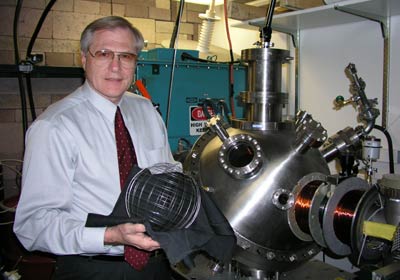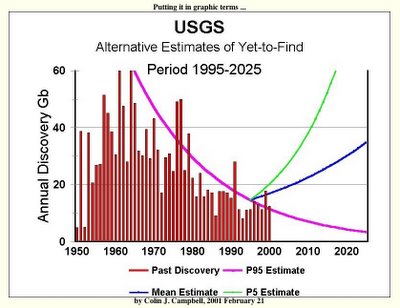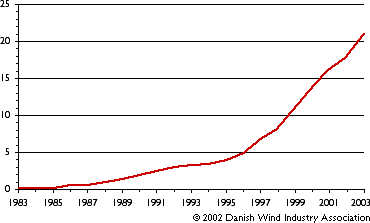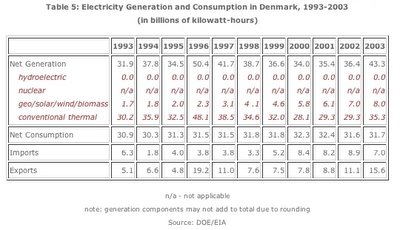Back in post
#191 part one: an economic frontier, we looked at the economic potential for future growth that space offers, as well as a few ideas on how we can (and in many cases already have) immediately begin efforts towards achieving these goals. Many people naturally remain unconvinced on the feasibility of future growth in space, which is a common but uninformed attitude that we at POD hope to change, but hopefully some people can at least begin to see the possibilities. Space is the reason the infinite growth paradigm will not fail humanity any time soon.
However economic growth through a new and potentially vast area of industry is only part of the story. While we need new economic growth into the future, we also need new growth in our resource base. We've previously looked at several possibilities for attaining large amounts of power from space, such as
#5 power satellites,
#51 space mirrors, and lunar solar power (
#33 and
#104), but a very important part of industrialising space, and meeting Earths future resource requirements, is also attaining non-energy resources from space; minerals and free metals (and with them, volatiles). In fact it's the key to succeeding at space industrialisation. This isn't because we are about to run out of metals here on Earth, or even because of the considerable dollar value attached to many of these resources, but because attaining mineral resources from space is what will allow further and ever more complex space projects to be achieved. We need resources from space to build the underlying space industrial infrastructure, and we need this infrastructure to make future space developments not only economic, but extremely prosperous. In later parts of this series we will take a closer look at the specific resources available to us near Earth and how we will utilize them, but in this follow up post to #191, I will primarily focus on the importance of establishing the basic space infrastructure, and begin to explain how this can be achieved in the short term, allowing all the marvellous space based energy solutions we've previously discussed to become a reality.
Common perceptions When mentioning the potential for exploiting resources from space, I've found that many people often have faulty assumptions about how this would be attempted. Here's how many people naturally imagine this process:
"Blast-off a massive rocket to escape Earth's orbit, with about 70% of its weight being rocket fuel, to carry a specially designed and extremely expensive habitat and mineral processing system along with a bunch of very expensively trained astronaut miners, land on an asteroid or the moon, process as much material as the vehicle can carry, and then use the remaining fuel to rocket the payload and equipment and astronauts back to Earth. But I've done the math and have worked out that you will only bring back material totalling a tiny fraction of the original mass of the rocket. That better be some damn valuable material."
This is ridiculous. Consider an analogy of the equivalent happening on a regular old mining project here on Earth:
"We've found a rich deposit of uberrock. Here's how we plan to mine it. We are designing and building a massive truck, bigger then any truck you've ever seen. It's going to have a gigantic bed to hold a specifically designed ore processing system, and up the front a cabin to house all of the miners. Most of the trucks mass is taken up by the fuel tanks, because we've heard there are no gas stations on the way to uberrock valley. So once this super truck is ready, and the men all trained up, we'll send the truck from our home base, several hundred miles to uberrock valley where it will mine the uber rock for six weeks straight. Then we load up the cargo hold with all the uberrock we've processed, and with what fuel remains in the truck we will drive the truck, complete with the ore processing system, the miners and our uberrock cargo, hundreds of miles back home to deliver the uberrock to you. Then we will turn around and go get the next load."
Yes doing things in space is expensive because we need to first escape Earth's gravity well. This is why we first must focus on establishing a basic infrastructure for the purpose of making our activities in space economic, just like any regular Earth-based industrial venture.
Sustainable development Setting up sustainable processes in space, utilizing resources from space, must not be about single missions or programs. Past space efforts have always been about single missions, which is why people think this way. We send men to the moon on a massive rocket; they land, collect some rock samples, plant a flag, play some golf for the camera, and return to Earth.
So people tend to follow the same logic for collecting resources from space: build and send a massive rocket with mining equipment, collect what you can, bring it all back to Earth. This concept is easily debunked as being a money sink. Just as a standard mining company on Earth mines resources by setting up base on location, building all of the necessary infrastructure to extract, process and transport the product, so too must space mining first establish the necessary facilities to extract, process and transport materials in space. People usually disregard space-based solutions such as lunar power or solar satellite arrays because they visualise massive projects involving sending all the materials in expensive rockets and assembling pre-constructed parts in space; in other words, they imagine single missions/programs. Instead of such inefficient and unsustainable plans we need to first establish simple facilities and processes that will allow greater and more complex missions to be attempted down the track.
The goal is to get to a point where any further space missions, be it building more solar arrays, processing asteroid material, or NASA's traditional dream of sending men to Mars, isn't achieved by some massive and prohibitively expensive program, but rather by utilising pre-established resources in space. So instead of thinking about single missions or programs, we must look towards establishing sustainable long-term infrastructure and a permanent industrial presence in space.
False expectationsAt this point people often imagine large Earth-like industrial facilities being set up at enormous costs. Perhaps they think of the artists impressions we've all seen similar to this one:

This is an incorrect expectation of initial space industrialisation, which can be fatal to the space effort. Just consider what our unrealistic expectations of our future in space after the Apollo missions has done: people lost hope in space because we still aren't even close to living in big spinning wheels like in
2001: A Space Odyssey.
The initial space infrastructure will be nothing so grand as what people often imagine as being necessary. We must build up one step at a time. Did European's colonising new lands start by building massive industrial complexes? For that matter, did they take all of their timber and bricks and mortar with them from Europe? Of course not, yet for some reason this is precisely the equivalent of what many people imagine being necessary to begin industrialising space. Establishing the initial infrastructure must be a relatively low-tech and relatively inefficient process (as far as modern industrial practices go) to be economic and sustainable. So instead of imagining futuristic moon bases like the concept art above, maybe imagining a more low-tech approach along the lines of this NASA concept art

might better place future expectations, and hopefully help people see that this future is probable, and not simply the dream stuff of science and technology geeks.
First stepsIndustrialising space and utilizing in-situ resources is a daunting task; we can't just go and build all these facilities tomorrow, it must be done in small steps. The first step certainly isn't to mine space resources to bring back to Earth to be used in ordinary industry and economies (this is a later goal, but not the starting point). The first step is to extract space resources to be used in space in the construction of further facilities, and therefore greatly reducing costs of further space missions. The very fact that a resource is already in space makes it of great value, because it saves the need to launch excessive materials and weight into orbit.
By first stocking a collection of basic supplies in space we automatically save billions of dollars in launch costs. Consider the possibilities if deposits of water, liquid oxygen, silicon, free metals and basic minerals, even simple materials such as ceramics or fibreglass, were attained and processed from near Earth objects and permanently stocked in Earth orbit. These basic essentials for sustaining humans, for spacecraft panelling, for rocket propellant, for general building materials, could be eliminated from launch costs, greatly increasing the feasibility of any future space missions. We currently spend billions of dollars globally each year on launching these basic essential materials into orbit for various missions, so there is most certainly a market for these resources. The first steps to industrialising space is extracting, processing and storing basic materials for use in space, which is the key to making space cheaply accessible for the future.
Just as current civilisation (apparently) is designed to run not just on oil but on cheap oil, future civilisation will be designed to run not just on space resources, but on cheap space resources. Cheap space resources become available as you cut down the considerable launch costs by building the bulk of spacecraft and facilities in space with materials attained from space. Learning how to "live off the land" as it were, by extracting basic materials from near earth objects and using those materials to build more complex facilities and spacecraft, is what will allow humanity to easily provide virtually infinite resources to all people, far into the future.
-- by Omnitir


















